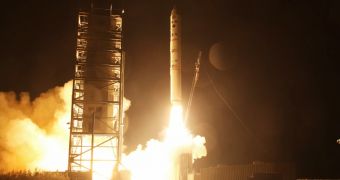NASA's latest moon probe, the Lunar Atmosphere and Dust Environment Explorer, was launched earlier today on top of a Minotaur V rocket and is on its way to study the very thin lunar atmosphere.
The project aims to study the very thin layer of atmosphere, which is more accurately called an exosphere that surrounds the moon and indeed, most other rocky planets and moons in our solar system.
This exosphere is made up of fine particles that hover around a planetary object but which aren't numerous or dense enough to be called an atmosphere. The Earth too has an exosphere at very high altitudes, beyond the orbit the of the International Space Station.
On the moon though, the exosphere is very close to the surface, since there's nothing else to fill its place.
The LADEE probe will take about a month to reach the moon and another month to fully deploy and lower itself to about 20 km above the lunar surface where it will begin the scientific observations.
Study of the fine dust that surrounds the moon is crucial for any future manned mission to any body that has such an exosphere, including asteroids. The dust is electrically charged and can wedge into equipment, possibly causing malfunctions.
LADEE will also test a new laser communication system that NASA plans to use on its future probes and robots. Laser communication can transmit a lot more data with less power than regular radio communications, but systems like these haven't been tested in an actual mission before.
While the probe is now in Earth orbit, there have been some issues which NASA engineers are investigating. The reaction wheels which are used to position and stabilize the craft have been shutdown automatically and engineers are trying to figure out what that happened. However, there are no indications that there is any actual problem with the probe.

 14 DAY TRIAL //
14 DAY TRIAL // 